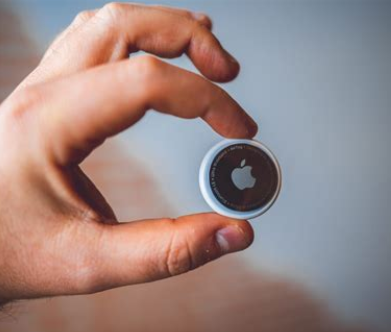I promised a deeper dive into the mechanics of the Apple AirTag a while back. I’m still tinkering with them to satisfy my curiosity. Today I’ll provide some of the technical data I’ve been gathering while gaining a better understanding of just how they manage to accomplish the features provided… and the primary divide appears to occur between the iPhone 10 and 11 releases. If you don’t have the full NFC chip functionality in your iPhone, you may only get “close” to your AirTag without actually finding it.
Here’s a quick YouTube video to walk you through it in under sixty seconds, and save the technical depths for further on in this post.
An Apple AirTag is a small, coin-shaped device that can be attached to personal items like keys, wallets, or bags, to help locate them if they get lost. Here’s how it works:
- Pairing: The AirTag needs to be paired with an Apple device such as an iPhone, iPad, or iPod touch using the Find My app.
- Precision Finding: If you lose an item with an AirTag attached to it, you can use Precision Finding to locate it using the Find My app. Precision Finding uses Bluetooth and the Ultra-Wideband (UWB) technology built into the iPhone 11 or later models to determine the precise distance and direction to the AirTag.
- Crowd-sourced tracking: If you lose an AirTag and it is out of range of your Apple device, it can still be located using Apple’s vast network of devices in the Find My network. Other people’s Apple devices that are nearby can anonymously detect and relay the location of the lost AirTag to the owner’s device.
- Siri Integration: AirTags are also integrated with Siri, so you can ask Siri to help you find a lost item with an AirTag attached to it.
- Privacy: To protect privacy, the AirTag does not track its location constantly, and it emits a sound when it has been separated from its owner for an extended period of time to alert nearby people that it may be lost.
Overall, the Apple AirTag is designed to be a convenient and efficient way to keep track of your personal items and locate them if they go missing.
The AirTag operates on Bluetooth 5.0 technology and uses the frequency range of 2402 to 2480 MHz, which is the standard frequency band for Bluetooth devices. This frequency band is also known as the Industrial, Scientific, and Medical (ISM) band.
To scan for an AirTag, you need an iPhone or iPad with the Find My app installed. The Find My app uses Bluetooth technology to detect nearby AirTags and displays their location on a map. If you have lost an AirTag, you can put it into Lost Mode, and when it comes within range of any iPhone or iPad with the Find My app installed, you will receive a notification with its location.
It’s important to note that AirTags are designed to be used with Apple devices only and are not compatible with Android devices or other non-Apple devices.
AirTags also use Ultra-Wideband (UWB) technology to provide precise location tracking when used with certain iPhone models. UWB is a short-range wireless communication technology that operates in the frequency range between 6.5 GHz and 8.5 GHz.
More specifically, AirTags use a UWB chip that operates on frequencies between 6.24 GHz and 8.24 GHz. This UWB chip enables the AirTag to communicate with nearby iPhones that also have UWB capabilities, such as the iPhone 11 and newer models.
When an iPhone with UWB capabilities is within range of an AirTag, it can use directional information from the UWB chip to precisely locate the AirTag, even when it’s in another room or hidden from view. This makes it easier to find lost items, as the Find My app can display the AirTag’s location with a high level of accuracy.


